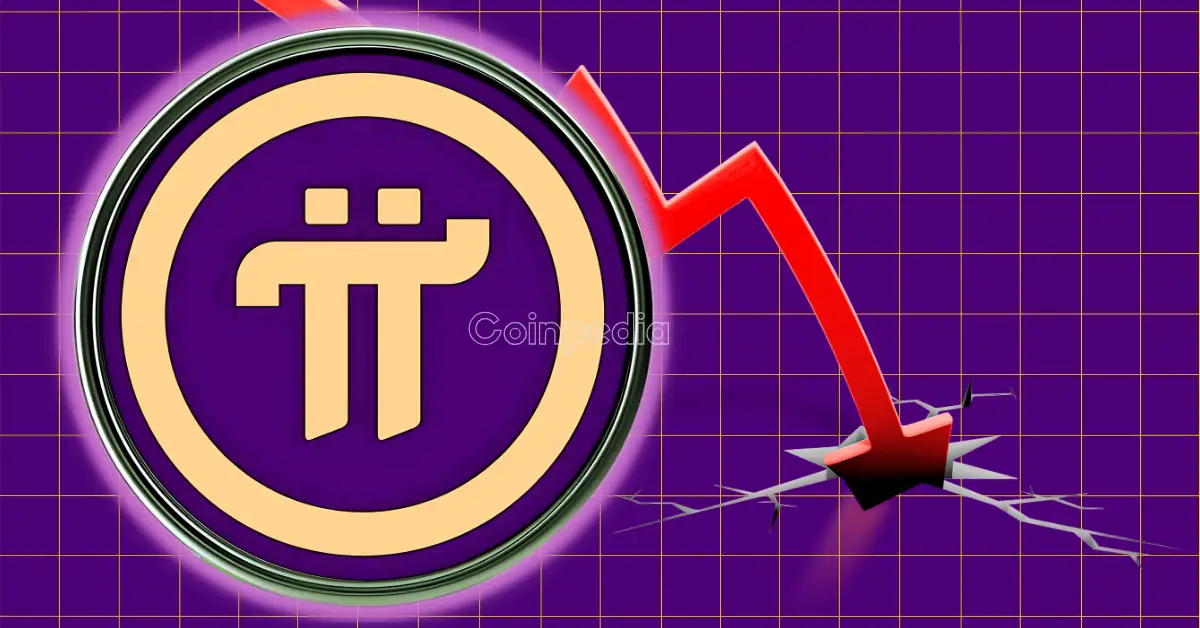The Dramatic Fall and Uncertain Future of Pi Network: A Comprehensive Analysis
Introduction: The Rise and Sudden Fall of Pi Network
Pi Network once generated immense excitement within the cryptocurrency community as a novel project aiming to democratize crypto mining by enabling users to mine tokens on their smartphones. With over 110 million users joining the ecosystem, initial expectations were high, and the launch of its Mainnet and token listing on exchanges appeared to be the dawn of a promising new digital asset. However, beginning with a peak token price near $33.74 and surging above $3 during early trading days, Pi Coin’s trajectory has sharply reversed into a steep and sustained decline, raising doubts over its viability and future prospects.
Key Factors Behind the Price Collapse
Early enthusiasm gave way to a massive volume crash—from a peak that supported strong price discovery to levels around $40 million, a fraction of previous activity. This severe drop in trading volume has curtailed liquidity, making it difficult for the token to stabilize or rebound. Limited exchange availability compounds this issue, with major centralized exchanges such as Binance and Coinbase still withholding listings, citing concerns related to the project’s centralized governance and transparency.
A critical point weighing on Pi Network’s credibility is the token distribution and network governance. Reports indicate that the Pi Core Team controls nearly 89% of the total token supply, a highly centralized allocation that stokes fears of manipulation and market dumps. Analysts have raised red flags around this risk, warning that such concentrated control undermines decentralization fundamentals vital for sustainable cryptocurrencies and likely contributes to the sell-offs by whales and early insiders.
The transition to Mainnet, initially expected to herald growth, instead triggered “revenge selling” as longstanding pioneers offloaded their accumulated tokens after years of waiting for liquidity. Additionally, scheduled token unlocks have inundated the market with millions of tokens, placing downward pressure on price. The resultant floods coincide with significant price crashes, such as 62.63% on the first day of exchange listing and further slumps exceeding 55% in subsequent months.
Despite grassroots interest and even community votes favoring Binance listings, the token remains absent from top-tier exchanges. The lack of formal regulatory clarity and transparency about the project’s structure creates barriers to wider acceptance. This exclusion from prominent platforms restricts market access for institutional and retail investors alike, starving Pi Coin of the necessary exposure to broaden and stabilize its valuation.
Strategic moves like planned integration with Telegram’s crypto wallet—theoretically a major adoption boost—have failed to materialize into substantive user growth or tangible value additions. Privacy concerns have also surfaced around the project’s data practices, further eroding trust. Without visible, impactful developments, investors question the underlying utility and long-term roadmap of the network.
Market and Technical Analysis
– Initial overheated valuations, including an all-time high near $33.74, were undeniably inflated by hype and speculative mania rather than underlying usage or fundamentals.
– Technical indicators reveal repeated breaks below key support levels, accompanied by declining momentum and sharp price drops exceeding 20%, 50%, and even 80% on several occasions.
– Though occasional short-lived rallies have occurred, these often collapse rapidly due to overwhelming sell pressure and poor market sentiment.
– The lack of continuous trading support on multiple exchanges feeds a volatile environment where prices swing dramatically with relatively low volumes.
Investor Sentiment and Community Impact
The Pi Network community, once buoyed by promises of an inclusive crypto revolution and full Mainnet launch, is now grappling with panic, uncertainty, and frustration. Many users face difficulties in withdrawing or trading tokens on the few platforms that list Pi, deepening concerns over liquidity and exit opportunities. Discussions on social media and forums reveal polarized views—some hold hope for recovery based on network size and future potential, while others predict an irreversible collapse akin to a pump-and-dump scheme.
Future Outlook and Possibility of Recovery
While the current landscape looks bleak due to fundamental and technical weaknesses, some analysts suggest a potential for a recovery phase, partly fueled by Pi Network’s sheer user base and ongoing attempts to improve ecosystem engagement. However, this would require substantial progress in decentralizing token control, securing reputable exchange listings, launching meaningful partnerships, and resolving regulatory issues. Without these, the likelihood of regaining investor confidence or sustaining valuation remains low.
Conclusion: A Cautionary Tale in the Crypto Landscape
Pi Network’s saga serves as a potent reminder of the volatile nature of emerging crypto projects and the critical importance of transparency, decentralization, and credible exchange access. Despite initial promise and massive community support, the token’s dramatic price crashes, centralization concerns, and unfulfilled expectations have significantly dimmed its prospects. Whether Pi Coin can evolve into a legitimate and resilient cryptocurrency or fade into obscurity rests on concrete governance reforms, enhanced market integration, and clear delivery on roadmap promises. For now, investors and observers should approach Pi Network with cautious skepticism, keenly watching if it can overcome its structural and market challenges or if its decline signals the eventual demise of the project.





